#choanoflagellate
Text
Anthro Allies Remastered (Part 11)

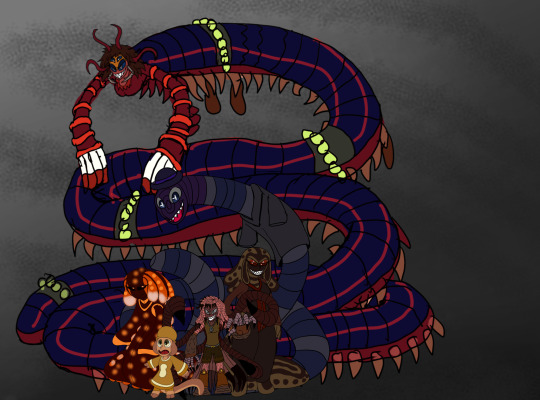
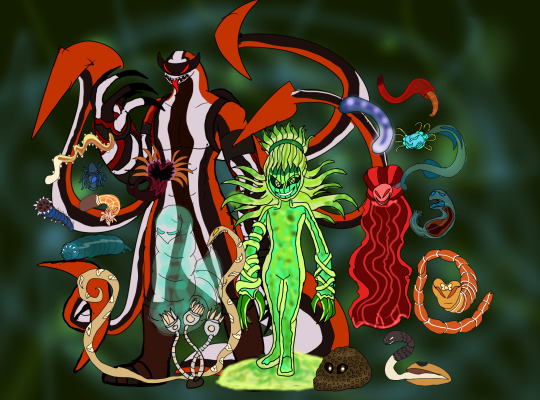
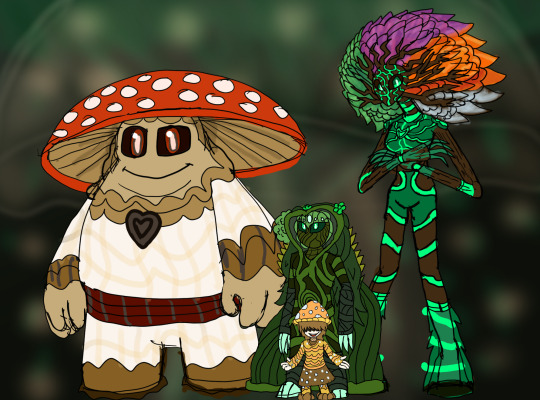
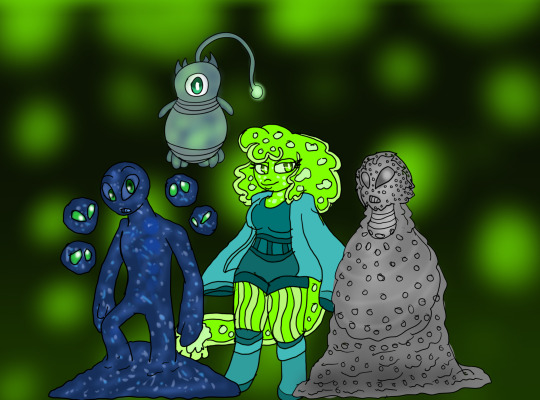
were at the home stretch we Got Mollusks, we got Annelids, Parasites, Flora, Fungi and Micro Organisms
Mollusks
Sync (Giant Octopus/Blue ringed)
Lakella (octopus hybrid)
Tihomier (vampire squid)
Silah (Squid hybrid)
Bobby (bobtail squid)
Cassandra (Cuttlefish)
Jubal (Ramshorn Squid)
Lozen (Nautilus)
Rosallyn (Snail)
Shankha (Garden snail/Horse conch)
Oozie (Sea slug)
Bryce (Land slug/Blue sea slug)
Ulysses (Bivalve hybrid)
Petunia (Bivalve Hybrid)
Lucian (Lined Chiton)
Gumshoe (Gumboot Chiton)
Annelids
Grindor (Earthworm/Leech Mutant)
Eztli (Leech)
Gorya (Giant Gippsland Earthworm)
Splicer (Bristle worm hybrid)
Legume (Peanut worm)
Gabija (Ragworm)
Parasitic worms
Pasala (Mutant Tapeworm)
Hammer (Hammerhead Worm)
Sludge (Mud dragon)
Lori (Loricifera)
Linka (Penis worm)
Gordian (Horsehair worms)
Husky (Roundworm)
Arrowhead (Arrow worms)
Spyne (Thorny headed worm)
Harry (Hairy Backs)
Jabber (Jaw Worm)
Slim (Flatworms)
Wheel (Rotifers)
Valve (Lampshells)
Brio (Bryozoa)
Kampto (Entoprocta)
Ribbon (Ribbon worm)
Phil (Horseshoe worm)
Plants
Cycle (Tree Of Life Ent)
Flo-Rel (Plant Ent)
Fungi
Matango (Giant Mushroom)
SHroom (Mushroom)
Microbes (Bacteria/Protist/Archaea/Monera)
Micro (Microbe)
Mirca (Bacteria)
Miniscule (Choanoflagellate)
Ambrosal (Protozoa)
Previous/Next
(For More Information About The Earthdemons, Neo demons, The Anthro allies , the O'Kong family and more of theses characters as well as updates please visit the @the-earthdemon-hub for more)
#My ocs#My art#elementalgod aj#aj the elementalgod#Isle 0#Toonverse ocs#The Watchful Eye#Watchful Eye#O'Kong Family#Earthdemons#Neo Demons#Anthro Allies#molluscs#annelids#Parasites#Plants#Fungi#Microbes#bacteria#Choanoflagellate#protozoa
6 notes
·
View notes
Text
Hotel Room Solo For Hot Alt Teen
Hot Pinay MILF Wife Enjoy Fucking and Riding Cock
New bathroom sex video
caught my mom bathing
Indian hot aunty homemade romance
Chubby babe fingering her chubby pussy
Amateur Blonde Teenager Nice Body Small Tits Caught Shoplifting And Fucked
Nude gay sex boy military He might be used to being paid, but we had
Bigdesi boobs fucking herself big tits bouncing fingring
Busty shemale prisoner anal fuck officer
#maharanees#benmost#crk#insanitariness#Patagonian#coproprietorship#casselty#nulls#Mindy#morphinomaniac#laurae#signaletics#Clitus#anurans#choanoflagellate#quasi-installed#Wall#ordonnances#repulser#Sabbat
0 notes
Text
choanoflagellate... you are so cute 💚
0 notes
Text
Phylum #2: Porifera, the sponges!
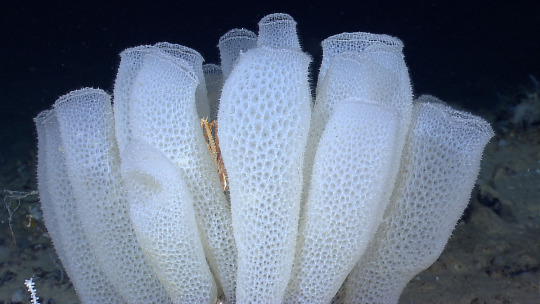

While not the most basal animals, sponges are probably the closest to what the first animals looked like. The basic shape is pretty simple: a surface covered in numerous pores takes in water, funneling it out through a large chimney.
The cells in charge of driving water through the pores, choanocytes, are surprisingly close in function to our closest unicellular relatives, choanoflagellates, hinting at a deep evolutionary connection between us and them. It is believed that the first sponge-like animals arose through multiple choanoflagellate-like cells sticking together, beating their flagella in tandem to filter water together!
While the basic sponge body plan is pretty simple, they have evolved numerous variations on it. Glass sponges have become delicate creatures built upon a silica skeleton, and have been reported to live for up to tens of millenia at the bottom of the ocean!
Meanwhile, deep-water carnivorous sponges capture small prey like crustaceans, with velcro-like hooks and enigmatic balloon-like structures!
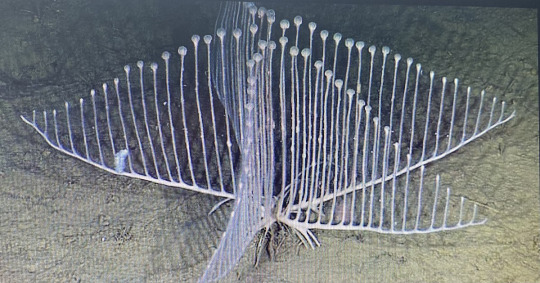

340 notes
·
View notes
Text
i love that in cladistics we have holozoa ("all animals"), metazoa (animals), and eumetazoa ("true animals"). dissing the choanoflagellates and sponges for not being able to hack it. you are in this clade, yet we do not grant you the rank of "true animal."
39 notes
·
View notes
Text
What Beaft shall ye be, Ediacarian edition
Lore post with descriptions of the options
Suck Tube

Murder Asshole

Scum Licking Bottom Dweller

A Secret Nth thing

42 notes
·
View notes
Text
I have a Mystery (oooh) to solve-- Why are protists a group? They are described as "one of the five kingdoms of life" in the A level textbooks at my school, but I'm not sure whether the textbooks are lying to us or whether somehow, mysteriously, protists count as a clade. JOIN ME ON A VOYAGE OF DISCOVERY. (Later- turns out this was a very short voyage but fun anyway)
What I don't understand, is why Protoctista is, according to school textbooks and teachers, a kingdom, when all the little subgroups of it are scattered across the animal family tree. How come choanoflagellates and amoebozoans are put in the same group when their relationship to each other looks like this-

(they're in yellow so you can see a bit clearer. Bear in mind, none of the white boxes are protists.)
First off, I want to find out more about protists. So let's head over to wikipedia

Oh? "Any eukaryotic organism", you say? Usually, these things will say "a phylum of animals" or "a kingdom of organisms", so they aren't in fact a valid kingdom.
Conclusion- school has been lying to me. However, I do understand why they aren't going through every single group, because if you look on EoL at eukaryotes, it's kinda ridiculous

-and most of these, if you google them, have no handy introductory articles and only have things for Proper Scientists (the kind that I am not... yet...).
But they could have said that "oh this isn't a proper clade but is a shorthand-y group for all non-plant/fungi/animal eukaryotes" and that would have been much better than just straight up lying-
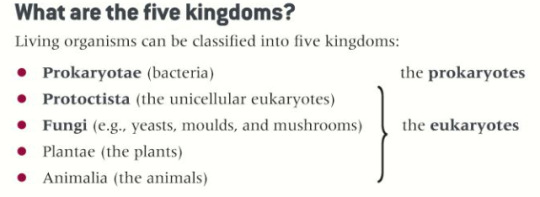
"living organisms can be classified into five kingdoms" they literally can't but ok
Annnd─ prokaryotes are also not a kingdom I don't think. Because, prokaryotes include bacteria and archaea. And as you can see in my handy little diagram above, bacteria and archaea are different domains, which is a broader classification than a kingdom. You can't be in different domains and be in the same kingdom, can you? It's like if a reptile was a primate, it just doesn't work like that!
#this is making me wonder#how much of the stuff i've learnt in other subjects / topics is also untrue?#and i just don't know enough to realise that#taxonomy
7 notes
·
View notes
Photo
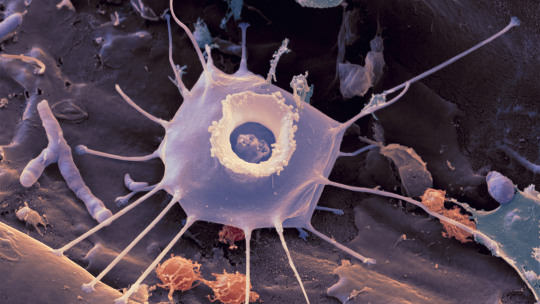
Brain-Signal Proteins Evolved Before Animals Did
How much earlier has now been made dramatically clear by a recent discovery by a team of researchers at the University of Exeter in the United Kingdom. They found that the chemical precursors of two important neurotransmitters, or signaling molecules used in nervous systems, appear in all the major animal groups that preceded creatures with central nervous systems.
The big surprise, however, is that these molecules are also present in single-celled relatives of animals, called choanoflagellates. This finding shows that animal neuropeptides originated before the evolution of even the very first animals.
The discovery “solves a long-standing question about when and how animal neuropeptides evolved,” said Pawel Burkhardt, who studies the evolutionary origin of neurons at the Sars International Center for Marine Molecular Biology in Norway. It also indicates that at least some of the signaling molecules fundamental to the operation of our brains first evolved for an entirely different purpose in organisms that consisted of only a single cell.
67 notes
·
View notes
Text

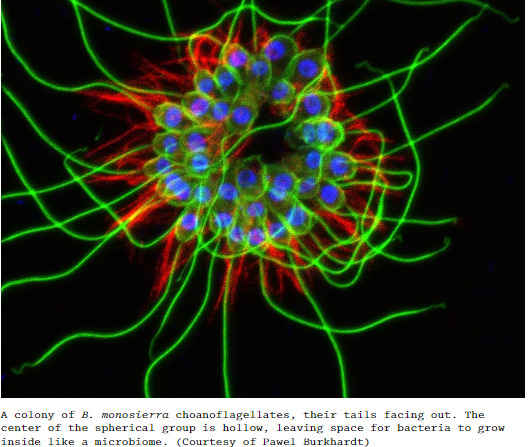
1 note
·
View note
Text
Cephalization, directionality, and capitalism
Just over half a billion years ago, earth was slowly thawing out of a global ice age. This planetwide glaciation is believed to be due to the evolution of photosynthetic microorganisms in the preceding Archean epoch. The availability of carbon dioxide and sunlight, coupled with the slow metabolisms (and thus low population competition) of contemporary heterotrophs led to a runaway chain reaction, with atmospheric CO2 levels dwindling faster than they could be replenished, dropping earth's greenhouse effect to such a degree that glaciers may have extended all the way to earth's tropical latitudes.
The biting cold of the next few million years bore fruit, however, as evidenced by a peculiar development on the once ice-locked seafloor - assemblages of organized cells metabolizing and reproducing in unison. It's in these thawing Ediacaran seas where we find Earth's first multicellular organisms, a development that is likely tied to the incorporation of mitochondria into eukaryotic cells allowing for the metabolization of the previously toxic oxygen (produced in spades by photosynthesis), providing the energy necessary to sustain large colonies, large tissue layers, and in time, large bodies.
The first multicellular organisms to evolve were probably sponges - there's some interesting debate on this topic regarding the ctenophores or comb jellies, but as far as I know, sponges are still considered the most likely first ambassador of true multicellularity on Earth. Sponges contain cells known as choanocytes, or "collar cells". These cells are aptly named; they posses a collar-like array of protuberances surrounding a central flagellum. As the flagellum beats, water currents are generated which pull suspended matter into the collar where they can be digested. Choanocytes are strikingly similar (read: practically identical) to the Choanoflagellates, free-living eukaryotes who, at times, are capable of forming small colonies. Morphological and genetic evidence places the Choanoflagellates as our most recent non-multicellular relatives. We both belong to the group Opisthokontae, which is actually defined by the presence of pushing rather than pulling flagella, the birthright passed down from these earliest ancestors, and present in ~1/2 of human gametes to this day.
What's interesting and peculiar about the Choanoflagellates, and to a more obvious degree, the sponges, is that they represent the development of something we consider rather banal - the first (multicellular) inside and outside. Choanocyte colonies are basically little balls with their flagella facing outwards, giving them an interior and an exterior. Sponges, unlike Choanoflagellates, form into hollow structures, with their choanocytes facing inwards. This orientation allows for their beating flagella to pull water inwards and upwards, drawing food material inside, and passing water upwards through the tube to be recirculated. I'm bringing this up for a reason which I'm unsure of how to broach directly at this point. Put a pin in this idea, I hope it will make sense soon.
Sponges weren't the only organisms in the Ediacaran seas. There were countless other strange forms, many of which elude taxonomic classification to this day. For the most part, bodyplans which developed during the Ediacaran simply don't exist anymore, a fact which places this period in stark contrast to the looming Cambrian, which provided us with the basic bodyplans of every modern organism. Many of these bodyplans were essentially pancake shaped, sitting atop the soft sediment, either still or moving very slowly. In the Ediacaran seas, sediment was not disrupted by benthic organisms in the way it is today. That is to say, it was simply layer upon layer of organic detritus, made up of the dead microorganisms from the water column above. As a result, if you were a hungry Ediacaran, the best place to find food would be right below you, and it would be plentiful in all directions. As a result, Ediacaran organisms developed what we call an oral and aboral surface. The oral surface, in contact with the sediment, digested organic material. The aboral surface, on the other hand, was digestively inert. This was, essentially, the first gut. A system where food is processed on one side, and the nutrients are used up by the other side, which doesn't play a role in the digestive process. In the same way we could say that choanoflagellates and sponges pioneered inside and outside as meaningful directions, these organisms pioneered the development of up and down, or forward and backwards, depending on how you look at it.
Once again, we're talking about something that might sound rather banal, but take a minute to think about how important that development is to our evolution. The creation of an inside creates it's opposite, the outside. The creation of a forwards creates it's opposite, a backwards. The inside is where we put the stuff we take in, it's where all the stuff that makes us up is, and it is distinct from the outside, which is where everything else is. Everything forwards is in contradistinction to everything that lies backwards, we point towards food and away from not food. I'm bringing this up not to be wishy washy and make some big claim about these things being social constructs (which they are, but that isn't to say they aren't meaningful categories), but rather to illustrate how the development of directionality seriously changes the game. I think that's about to become clear -
Because at some point, something really weird happened. A pancake budded off an offspring, and this offspring had a mutation. The oral surface was pinched such that it was not facing down, but was facing diagonally to one side. "Okay, big whoop." Buckle up buddy, we just witnessed the development of the first *head*. A gut facing one direction means we've entered the third dimension - we have an inside and an outside, an up and a down, and now, a left and a right. A mouth facing one direction is much harder to point towards food, so it makes sense to start figuring out ways to find food and point in the right direction - neuronal networks become denser around the mouth, organs to detect light, scent, and touch form around the mouth, and muscle groups start to evolve which allow for these organisms to better point themselves towards food. This is the process we call cephalization. At some point, the oral surface formed into a tube, giving us the first through gut, the first *mouth* and the first *anus*. These weird mutants were the first bilaterians - the group to which we belong, and to which almost every multicellular species alive today belongs.
There's a connection here between cephalization and the development of photosynthesis. Both developments led to cascades, runaway progressions with increasing momentum, inertia. Once the cat was out the bag, the sky was the limit. Bilaterians meant worms, and worms meant sediment could be churned - it's here where we see the first fossil traces of subterranean lifestyles. Heads meant eyes, noses, antennae - if you were on the menu, you could now be detected at a distance, and aimed at. The detritus buffet was over, the reign of the pancakes coming to a close. Now was the age of the worms, the age of efficacious and motivated movement, the age of tunneling and swimming, of hunter and hunted, of pursuit and flight. The Cambrian.
------------------------------------------------------------------------------
In 1651, the philosopher Thomas Hobbes wrote Leviathan. In it, he wrote about the necessity of the state and it's authority over its constituents, led by a sovereign but crucially self-enforced through the social contract - through the motivation of it's constituents to keep the state intact and running properly. Leviathan was famously depicted by Abraham Bosse as a massive king, with all the expected accoutrements - a sword, a sceptre, a crown atop a masculine head - but most notably, a body composed of millions of individuals, individuals who bear the crowns weight, who wield the kings sword (against whom?), who give the king form.
In 1983, Fredy Perlman wrote Against his-story - against Leviathan! Perlman doesn't so much oppose Hobbes' and Bosse's characterization of Leviathan as much as he boils it down to its essence. Perlman imagines the state, the Leviathan, as a *worm*. The worm has direction, it has inside and outside, a head and an anus, it has motivation to enclose and digest, to accumulate and use-up. Perhaps most strikingly, the worm-state is undead. It has no organic life, it's not a real organism in the world and this is obvious on its face. A state cannot be identified in reality, borders don't exist physically, power isn't a raw immutable force of nature, but rather a force that comes into being when individuals are deputized and given the right to enforce laws, to imprison, kill, and otherwise do violence upon those who cannot fight back with the same impunity. The worm-state is made up of it's living constituents, and they give their labor, their devotion, to move the worm and to operate its organs. The living in perpetual servitude to the dead.
Forests and fields lie outside the cities, they hold the promise of value within, of wood for walls and fires, and soil for crops and animals. The city expands, it encloses, it brings the wild outside into the domestic inside. Crops and animals are monitored and bred, culled and planted at specific times in order to maximize output. When there are no more forests or fields, mountains or rivers, wild outsides to be enclosed, the production of value abstracts itself, it expands beyond reality into the service industry, into markets and professional spaces. Further and further value is extracted at more and more abstract levels. The worm is dead and it only continues to move so long as the outside is brought inside. When the outside is gone, new outsides have to be created within the inside, at least until a new outside is found, a new frontier - a new continent, a recently cleansed village, a new planet.
It's here where I have to make clear something VERY important. The connection I'm drawing here isn't biological in nature. The topology of our bodies is not at fault, it is not immoral, our insides and our heads and our mouths and our anuses factor only into our biological processes. But nonetheless I am drawing a connection here, not between our biological reality and the sociopolitical state of things (as though it were an inevitable, transhistorical curse), but rather between the biological cascade brought on by directionality (a kind of *polarity*), and what I believe is an internal, psychosocial cascade brought on by the (invention? discovery?) of *object polarities*.
Once an inside is discovered, the outside becomes clear. Once a forward is discovered, movement towards the forward and away from the backward becomes oriented.
Once the city walls form, the wilderness appears tantalizing. Once we begin to write and to paint, the uncaptured rawness of experience becomes something to be jotted down or otherwise put down on paper permanently. Once we discover that a certain type of sex between certain types of genitals leads to offspring, gender comes into existence, defined by the instrumental "purpose" of our sexuality. Once we invent the camera, the world appears to be made of nothing but pictures, surfaces without interiority, objects we view from a distance using our own biological cameras, the eyes, trusting only our eye-screens to be true subjects.
The mind is a house, our eyes windows, we look at the outside and we know about the outside but we find ourselves increasingly unable to feel a damn thing about the outside. Our once shapeless minds have become worms themselves, they've learned to recognize inside and outside, forwards and backwards, left and right. They've learned to recognize the utility of categorization, the untapped efficiency that lies in the uncaptured world, and simultaneously we've learned to fear the uncaptured. The wilderness waits for us to conquer it, and yet it is also where the monsters are, where the witches are, where the savages are, with their savage ways, with directionless minds that we call unthinking because "to think" may as well be a synonym for "to want to take within".
Don't know how to close this off. Food for thought (worm food).
1 note
·
View note
Text
Understanding =chromatin during differentiation in choanoflagelles
University of Galway
See the full job description on jobRxiv: https://jobrxiv.org/job/university-of-galway-27778-understanding-chromatin-during-differentiation-in-choanoflagelles/?feed_id=62981
#ScienceJobs #hiring #research
Galway #Ireland #PostdoctoralFellow
0 notes
Text
First putative occurrence in the fossil record of choanoflagellates, the sister group of Metazoa
New Post has been published on https://petn.ws/FTDiR
First putative occurrence in the fossil record of choanoflagellates, the sister group of Metazoa
Booth, D. S. & King, N. The history of Salpingoeca rosetta as a model for reconstructing animal origins. Curr. Top. Dev. Biol. 147, 73–91 (2022). Article CAS Google Scholar Richter, D. J. & King, N. The genomic and cellular foundations of animal origins. Annu. Rev. Genet. 47, 509–537 (2013). Article Google Scholar Adl, S. M. […]
See full article at https://petn.ws/FTDiR
#PetTravelNews
0 notes
Text
i think its mean when ppl say like. ew i didnt come from a bacteria as an insult abt evolution. like no you didnt come from a bacteria he's like your cousin. but like

dont be mean to choanoflagellates they're so cute. hi grandpa 👋👋
2 notes
·
View notes
Text
NẤM ĂN GÌ??

Nấm là sinh vật tiêu hóa thức ăn bên ngoài cơ thể của chúng. Chúng tiết ra các enzyme tiêu hóa phá vỡ các phân tử thức ăn lớn trong môi trường, sau đó hấp thụ các sản phẩm phân hủy qua màng tế bào của chúng bời quá trình hấp thụ dị dưỡng. Chế độ dinh dưỡng này thuận lợi trong nhiều môi trường khác nhau. Rất nhiều loại nấm là sinh vật hoại sinh, nghĩa là chúng hấp thụ dinh dưỡng từ chất hữu cơ của sinh vật chết. Một số loại là sinh vật ký sinh, lấy dinh dưỡng từ vật chủ đang sống. Còn một số khác lại là những loài cộng sinh, cùng mang lại lợi ích cho nhau.
🍄 Tổ tiên của nấm
Các loài nấm hiện đại được cho là đã tiến hóa từ một tổ tiên là sinh vật đơn bào có lông roi. Những cơ thể đầu tiên mang đặc trưng của nấm xuất hiện vào khoảng 1200 triệu năm (Ma) trước đây. Tổ tiên chung của chúng cũng có thể là một sinh vật nguyên sinh có roi. Bằng chứng về trình tự gen chỉ ra rằng nấm có chung tổ tiên với choanoflagellates và động vật nhưng không cùng tổ tiên với các sinh vật nhân thực khác. Đặc điểm có nguồn gốc chung của sinh vật lông roi sau là có lông roi phía sau giống như tinh trùng của động vật. Roi của các sinh vật nhân thực khác đều ở trước.
Nấm đại diện cho một trong bốn nhánh tiến hóa của sinh vật đa bào (thực vật, tảo nâu và động vật là ba nguồn gốc còn lại).
🍄 Nấm đơn bào - Nấm đa bào
Đa số các loại nấm đều đa bào, nhưng các loài đơn bào cũng có ở hầu hết các nhóm nấm. Nấm đơn bào, sống tự do được gọi là nấm men. Một số loài nấm vừa có giai đoạn sống của nấm men vừa có giai đoạn sống đa bào. Do đó, “nấm men” không dùng để chỉ một nhóm phân loại đơn lẻ mà là một lối sống đã tiến hóa nhiều lần. Nấm men sống trong môi trường lỏng hoặc ẩm và hấp thụ chất dinh dưỡng trực tiếp qua bề mặt tế bào của chúng.
Cơ thể của nấm đa bào được gọi là hệ sợi nấm. Hệ sợi nấm bao gồm các sợi nấm (một khối các sợi dạng ống riêng lẻ) mà ở đó quá trình hấp thu dinh dưỡng diễn ra. Thành tế bào của sợi nấm được củng cố rất chắc chắn bởi các vi sợi của một phức hệ polysaccharide là chitin.
Ở một số loài nấm, sợi nấm được chia nhỏ thành các ngăn giống như tế bào bởi các vách ngăn không hoàn chỉnh. Những sợi nấm được chia nhỏ này gọi là sợi nấm có vách ngăn. Vách ngăn không chia cách các ngăn hoàn toàn. Các lỗ ở trung tâm của vách ngăn cho phép bào quan, thậm chí là cả nhân di chuyển một cách có kiểm soát giữa các ngăn. Ở một số loài nấm khác, sợi nấm không có vách ngăn nhưng có thể chứa tới hàng trăm nhân. Những sợi nấm đa nhân, không phân chia này được gọi là cộng bào. Trạng thái cộng bào là do sự phân chia nhân lặp đi lặp lại mà không có phân chia tế bào chất.
Nấm có thể phát triển rất nhanh khi gặp điều kiện thuận lợi. Ở một số loài, các sợi nấm của một thể sợi có thể phát triển vượt quá 1 km một ngày. Các sợi nấm có thể phát tán để tìm chất dinh dưỡng trên một khu vực rộng lớn, hoặc chúng có thể tụ lại với nhau thành một khối để khai thác nguồn dinh dưỡng phong phú. Các nấm quen thuộc mọc ở những vùng ẩm ướt là những cấu trúc quả thể sinh bào tử. Ở những loài nấm tạo quả thể này, khối lượng hệ sợi nấm thường lớn hơn rất nhiều so với quả thể được thấy. Hệ sợi nấm của một loài nấm được phát hiện ở Oregon bao phủ gần 900 ha dưới lòng đất và nặng hơn đáng kể so với một con cá voi xanh (loài động vật lớn nhất). Trên mặt đất, cá thể này hiển nhiên chỉ là những cụm nấm biệt lập.
🍄 Nấm và môi trường
Các sợi nấm tạo ra một mối quan hệ độc nhất với môi trường vật lí. Hệ sợi nấm có tỉ lệ diện tích bề mặt trên thể tích lớn hơn rất nhiều so với hầu hết các sinh vật đa bào lớn. Tỉ lệ lớn như vậy là một sự thích nghi kỳ diệu đối với sự hấp thu dị dưỡng. Trong toàn bộ hệ sợi nấm (ngoại trừ cấu trúc quả thể), tất cả các sợi nấm đều rất gần với nguồn thức ăn của chúng.
Nguồn: flexbooks.ck12.org courses.lumenlearning.com; ucmp.berkeley.edu
🙎 Writer & Translate: MyMy
🙎 Editor: Yuu
📧 Mọi chia sẻ, góp ý xin gửi về hòm thư của chúng mình: [email protected]
Bản quyền nội dung bài viết thuộc về Future of Science. Vui lòng không sao chép dưới mọi hình thức khi chưa có sự đồng ý của tác giả.
Khi re-post chú thích ghi nguồn đầy đủ.
“Make science close to you!”
#fos
#khoahoc
#biology
0 notes
Text
Wild Arms 3 Part 24: The Self-Righteous Gemstones
Wild Arms 3 Part 24: The Self-Righteous Gemstones
Welcome back to Wild Arms 3! Today is October 10, Chocolate Day. Chocolate is a cute sounding name for food. It whets my appetite just by the ring of it. Thank god it wasn’t named choanoflagellate or something. Look the name up in an encyclopedia. You’re not gonna like what you see.
Previously on Wild Arms 3: Bang Bang Lucky Janus
Bang Bang Lucky Janus
C’est lui qu’a le truc pour nous…
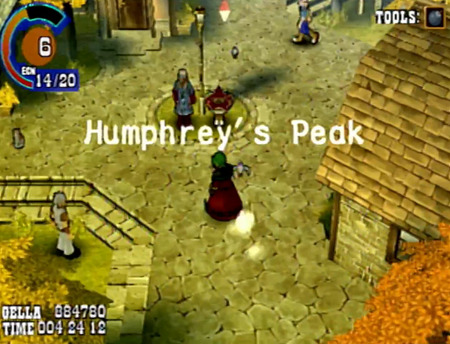
View On WordPress
0 notes
Text
Ruxolitinib, the Bimodal Broker Powerful against Endometrial Cancer
Methods: VSMCs associated with verse 2-3 classy from youthful (8 weeks) and previous (18 months) women SD subjects were activated in to premature senescence by simply contact with One hundred fifty mu mol/l., H2O2 from the existence or perhaps deficiency of diverse levels involving 18 beta-estradiol (E-2). The term or activation of senescence-associated beta-galactosidase (SA-beta-Gal), DcR2, oncogene Ras, p38, PRAK, p53, p21, p16 along with Rb ended up being found by circulation cytometry, pull-down assay or even Traditional western soak up. Results: Circulation cytometry evaluation showed that within the VSMCs coming from young rats pre-administration of E-2 significantly under control the actual H2O2-induced early senescence (decreasing each area of SA-p-Gal good cellular material along with cellular expression involving DcR2) in a dose-dependent manner; these types of senescent-inhibiting effects of E2 may be clogged simply by an estrogen receptor villain ICI 182,780 (12(-5) mol/L). Pull-down assay or even Traditional western mark examination revealed that pre-administration of 12(-8) mol/L E-2 drastically reduced your H2O2-induced activation of oncogene Ras, as well as task associated with p16 and also p38 MAPK, and phrase associated with PRAK, p53, p2land p-Rb. Suddenly, from the VSMCs from aged rats the senescent-inhibiting aftereffect of E-2 faded and switched to some senescent-promoting motion at 12(-8) mol/L. This senescent-promoting effect could be superior simply by ICI 182,780 along with eliminated #Link# by a cytochrome P450s chemical ABT. Conclusion: Estrogen inhibits stress-induced untimely senescence of VSMCs from younger feminine by way of their receptor-mediated surpression associated with the two Ras-p38-PRAK-p53-p21-Rb and also Ras-p16-Rb path ways, however result vanished and much more turned with a senescent-promoting actions from the cells coming from aged physique probably as a result of side effect involving estrogen metabolites. (H) 2011 Elsevier Eire Ltd. Almost all protection under the law set aside.By using a flight product (HYSPLIT) analyzed your ozone assaults witnessed from urban Jinan in 2006. There was Eighty-four (throughout Twenty-four nights) involving ozone attacks #Link# (> 100 ppbv) observed through the study. Summer had been probably the most toxified thirty day period in the year. The first event affecting May well Four ended up being generally due to the favorable meteorological situation pertaining to ozone creation and accumulation. The multi-day occurrence coming from Six to eight 06 was in connection with the passageway associated with typhoon Nesat. Thirty-nine l (inside 11 times) associated with ozone assaults were noticed from Summer Ten to be able to 24. Massive stagnation, recirculation involving atmosphere bulk, extreme photo voltaic the radiation, high temperature and long-rang transportation involving contaminants have been the primary reason to the ozone attacks during this time.The actual choanoflagellates (Choanoflagellatea) include #Link# a serious number of nanoflagellates, which can be all-pervasive within the aquatic surroundings. Current molecular phylogenies have demostrated these phones be the sibling class to the Metazoa. Even so, the particular phylogeny in the choanoflagellates continues to be faraway from recognized. Many of us present here a 29 taxon, multigene phylogeny in which robustly areas the foundation with the choanoflagellates. Among the authentic nonloricate family members, Codonosigidae can be shown to be the polyphyletic assemblage stacked within the Salpingoecidae. All of us intricate with a revised taxonomy in which separates Choanoflagellatea in to a couple of purchases: Craspedida along with Acanthoecida. Craspedida is made up of types in which have got an organic mobile or portable layer and contains the one family members Salpingoecidae. Individuals your predominantly underwater Acanthoecida create a siliceous lorica along with an organic cover and are in a couple of families-the Acanthoecidae as well as Stephanoecidae fam. n.
0 notes